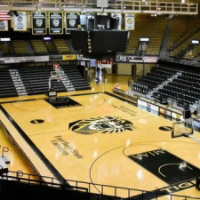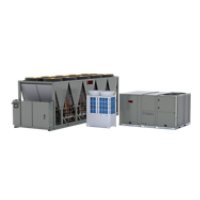Whitepaper
Published: September 28, 2022
Strategic Electrification - Satisfy the Demand with VRF Technology
At the current rate of increasing CO2 emissions, climate scientists predict significant environmental changes by 2030. The good news? We can change buildings’ reliance on fossil fuels through “strategic electrification.” Our white paper, “Strategic Electrification: Satisfy the Demand with VRF Technology,” explores what decarbonizing building comfort might look like, and the contributions that variable refrigerant flow systems can make.

Quick Facts

Electrify Everything? VRF Systems Can Help Solve the Challenges
At the current rate of increasing CO2 emissions, climate scientists predict significant environmental changes by 2030. The good news? We can change buildings’ reliance on fossil fuels through “strategic electrification.”
Our white paper, “Strategic Electrification: Satisfy the Demand with VRF Technology,” explores what decarbonizing building comfort might look like, and the contributions that variable refrigerant flow systems can make.
Electrify Everything – Multiple reports and studies show how strategic electrification in buildings, including the electrification of heating, may be the best way to achieve aggressive carbon reduction goals.
Solving Electrification Challenges – This seemingly complex concept has three primary components in which VRF systems can play a role: increase energy efficiency; power thermal end uses with renewable energy; and decarbonize the electric grid.
All-Electric Heating and Cooling with VRF – VRF technology consolidates heating and cooling into one all-electric, multizone system. Today’s VRF systems are designed for cold-climate performance. Paring VRF with building automation produces additional energy savings.
Heat Pumps and Heat Recovery – Both provide heat-pump cooling. Heat recovery systems provide simultaneous heating and cooling by repurposing thermal energy that would have been rejected by the outdoor unit.
Increased Energy Efficiency – In regions with carbon-intensive power grids, using more efficient systems helps reduce energy consumption; a good first step toward lowering carbon footprints. VRF systems achieve high levels of efficiency by continually adjusting capacity and energy consumption to precisely match each zone’s load.
Powering Thermal End Uses with Renewable Energy – Given the current limitations of onsite and utility-scale energy storage technologies, renewable sources don’t leave any room for electrical waste. By using the precise amount of electricity needed to maintain each zone’s set point, VRF systems help mitigate these challenges.
Decarbonizing the Electric Grid – The energy efficiency and intelligence of VRF zoning systems may help utilities manage the challenges of peak loads, utility-scale storage, and variable generation.
Financial Incentives – Federal standards and programs like ENERGY STAR®, tax credits and utility rebates are helping to accelerate the adoption of energy efficient alternates to fossil fuel-burning systems.



